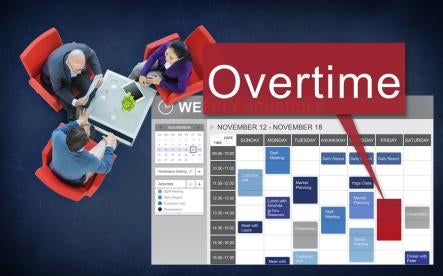On May 18, 2016, the U.S. Department of Labor (“DOL”) announced the publication of a final rule that amends the “white collar” overtime exemptions to significantly increase the number of employees eligible for overtime pay. The final rule will go into effect on December 1, 2016.
The final rule provides for the following changes to the executive, administrative, and professional exemptions:
-
The salary threshold for the executive, administrative, and professional exemptions will increase from $23,660 ($455 per week) to $47,476 ($913 per week).
-
The total annual compensation requirement for “highly compensated employees” subject to a minimal duties test will increase from the current level of $100,000 to $134,004.
-
The salary threshold for the executive, administrative, professional, and highly compensated employee exemptions will be automatically updated every three years to maintain the standard salary level at the 40th percentile of full-time salaried workers in the lowest-wage census region.
-
The salary basis test will be amended to allow employers to use non-discretionary bonuses and incentive payments, such as commissions, to satisfy up to 10 percent of the salary threshold.
While it is certainly good news that the DOL has not changed the primary duties requirements for the various exemptions, the significant increase to the salary threshold is expected to extend the right to overtime pay to an estimated 4.2 million workers who are currently exempt. This change will not only affect labor costs but require employers to rethink the current structures and efficiencies of their workforces, including assessing how the reclassification of workers from exempt to non-exempt will affect their fundamental business models. In addition, to the extent exempt employees are reclassified as non-exempt, employers will have to consider implementing policies and procedures to both comply with overtime laws and control overtime worked, such as prohibiting all forms of off-the-clock work and instituting and maintaining accurate record-keeping.
Resistance to the final rule should be expected. The DOL received nearly 300,000 comments to its Notice of Proposed Rulemaking, many of which came from employers and advocacy groups providing thoughtful commentary on the practical issues and repercussions in implementing such a significant increase to the salary threshold. Because of the severity of the final rule, a Congressional challenge may be in the offing. Subject to the Congressional Review Act, the final rule will be subject to scrutiny by the next Congress to be seated in 2017.
What Hospitality Employers Should Do Now
With the benefit of more than six months until the final rule takes effect, hospitality employers should do the following:
-
Audit your workforce to identify employees currently treated as exempt who will not meet the new salary threshold.
-
Closely examine your workforce to determine whether any of your currently exempt employees fail to meet the salary threshold of the new rule.
-
Take advantage of this time to also review your exempt employees’ primary duties, even though the duties test has not been changed by the new rule. Some job positions in hospitality that have been susceptible to failing the primary duties requirements include entry-level managers, catering managers, executive chefs, and sous chefs. There is no time like the present to conduct a comprehensive self-audit to ensure full compliance.
-
When auditing the exempt status of your workers, determine whether to increase their salaries or convert them to non-exempt. If an employee’s salary need only be increased slightly to satisfy the new rule, it may be an easy decision to simply provide the employee with that salary increase. But if you would have to provide a substantial salary increase to meet the new threshold, it may be easier to reclassify the employee as non-exempt.
-
Keep in mind that converting employees from exempt to non-exempt implicates a number of other issues that you would be wise to deliberate carefully, such as estimating how much overtime an individual is expected to work in order to determine what an employee’s new hourly rate will be and ensuring compliance with the overtime laws.




 i
i

